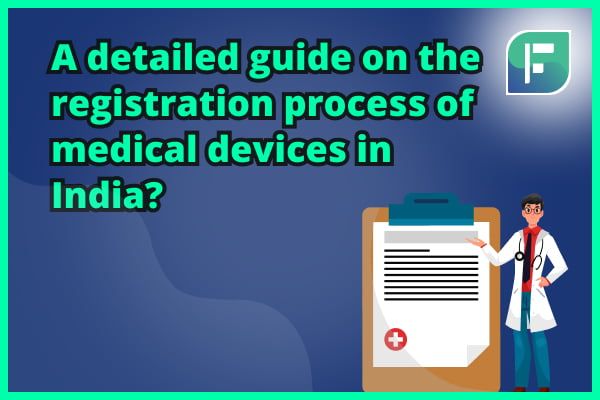India has a place with one of the main 20 clinical gadget markets on the planet. The Indian market for medical devices is predicted to be worth USD 65 billion in 2024, according to various reports.
Additionally, lucrative opportunities for foreign businesses in this sector are created by favorable government policies like 100% FDI and R&D support.
Nonetheless, prior manufacturers were allowed to sell their items in the Indian market with practically no severe guideline process. However, since 2006, the CDSCO has mandated that all imported medical devices undergo a mandatory registration procedure in India.
The registration procedures for the various categories of medical devices in India are described in detail below.
Classes of Medical Devices in India
Clinical gadgets in India are arranged into 4 distinct classes in view of their various factors.
Take a look at Class A—this category includes all low-risk products. Thermometers, surgical dressings, bolster sutures, and other items fall under this category.
Class-B Medical devices, such as hypodermic needles, suction equipment, forceps, a rectal balloon, a vial adapter, and others, fall into the moderate risk category.
Class C Medical devices are those that fall into the moderate-high risk category; this includes things like bone cement, a device to cut veins, and bone fixation.
Class D includes all medical devices with a high risk of failure, including implantable devices, coronary stents, and more.
Procedure of Medical Device Registration in India
Check if Medical Device really requires a registration
Before you can sell a medical device in India, you must first determine whether it requires registration. The assembling and circulation of clinical gadgets in India are totally directed by the Medications and Restorative Demonstration, 1940.
Right now, there are 22 “Informed Clinical Gadgets” which are controlled by the said Act. Cochlear implants, syringes, endotracheal tubes, spinal needles, cardiac stents, dental implants, annuloplasty rings, catheters, tracheostomy tubes, and surgical sealants are just a few examples of the medical devices that must be registered before they can be manufactured and sold in India.
Additionally, the Drugs Controller General of India (DCGI) may issue a “No Objection Certificate” (NOC) to exempt particular products from the medical device registration process in certain instances.
Appoint an Authorized Person in India
It is a required decision that clinical gadget enrollment in India can’t be proposed to somebody who isn’t from India. As a result, foreign organizations must appoint an Indian representative to handle registration on their behalf.
To this end, it is generally useful to enlist a pharma administrative counseling firm in India that will go about as a resource for the enrollment experts in India. These consulting firms will assist in the registration process, vigilance, device approval, and reporting.
Please be aware that only authorized Indian partners with a wholesale drug license on forms 20B and 21B may assist foreign organizations in the registration process. As a result, they must always select an Indian pharmaceutical regulatory consultant.
After the process is complete, a manufacturer will have the registration certificate and be able to freely appoint distributors to manage their supply chain in the Indian market.
Submit all regulatory documents under form 40
If you hire a leading pharma regulatory consultant in India to assist you with the registration of a medical device, you will be required to submit a dossier that is based on all of the required documents.
Form 40 TR6 Challan PMS (post-market surveillance) report Schedule D(I) Power of attorney Quality assurance certificate Conformity declaration Master file of the device Master file of the plant Sale certificate Regulatory approvals CE certificate .
Also, you must pay a fee for the registration process. Here is a comprehensive list of all the necessary documents. For the registration of a single medical device in India, the CDSCO-approved fee is USD 1000, while the fee for a single manufacturing site is USD 1500. It can take around 6 to 9 months to finish the enrollment cycle.
In addition, if a product does not have a predicate in India, a special committee will be set up to evaluate its safety and effectiveness. In such cases, it can require over 9 months to finish the enrollment cycle.
Acquire a Medical Devices Registration Certificate in Form 41
After the CDSCO receives the documents from the Indian partner, it will conduct an investigation and send the first set of questions three months later. Your selected Indian pharma regulatory consulting firms will be required to respond to the CDSCO’s inquiries. After this, CDSCO will either issue another set of questions or the license if they are satisfied with the answers.
The newly obtained medical devices registration certificate will be valid for three years.
Obtain the Import License in Form 10
The distributor will need to directly submit an application on Forms 8 and 9 to the CDSCO in order to obtain the Import license on Form 10. The power will handle such demands inside 4 to 12 weeks.
Start Marketing in India
Your medical devices can be shipped to the Indian Territory and distributed in the market once you have obtained the import licenses and registration certificate.
End Note
In this article, we learnt about different types of medical devices registration requires and the whole procedure of registering it as well.





